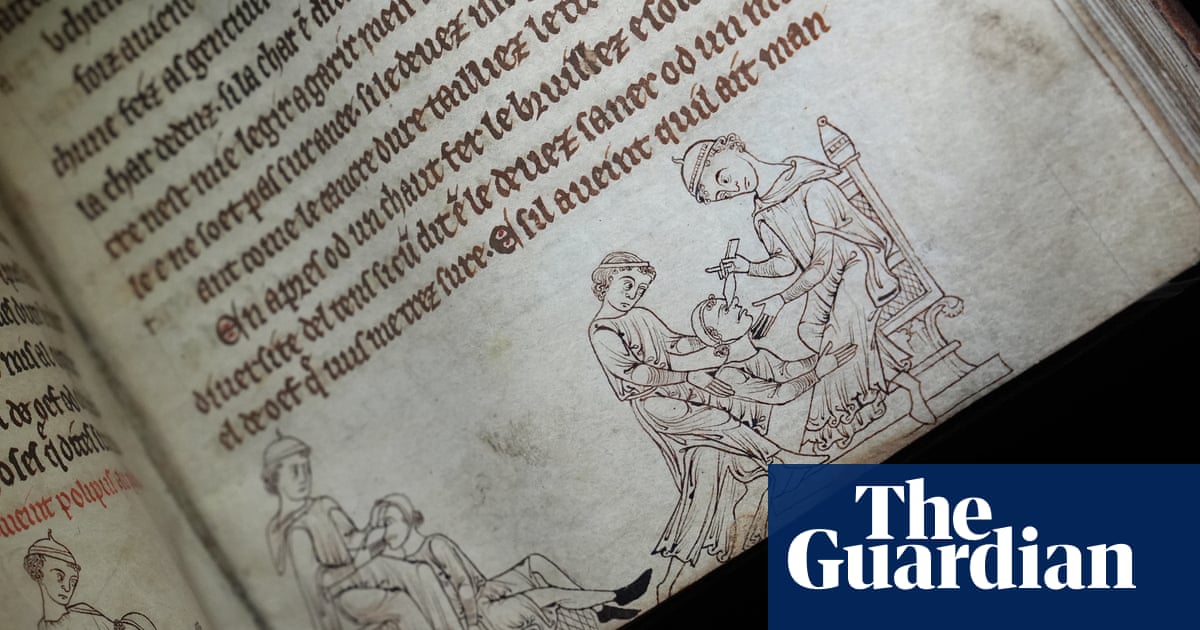Why Poppy testicles? Cambridge Show Explains Medieval Medicine | History of Science

Medieval treatments may question the mental health of the doctors of the day, but a new exhibition is being prepared to take visitors to the minds of such medical staff and to reveal the method that seems to be madness.
Curious treatments open on Saturday At the Cambridge University Library, the climax of the digitalization and cataloging projects of more than 180 manuscripts dating from the 14th or 15th centuries includes recipes from the summary of the treatments to alchemy texts and manuals, to healthy life.
The elements exhibited include wrace-in-non-surgical diagrams, different body parts associated with star signs, and zodiac man showing with translations themselves.
What is clear is that people from the Middle Ages encounter most of the same disorders experienced by patients today and they deal with them in a very different way.
One of the manuscripts in the 15th century show shows that women can improve their infertility by burning cheek testes in a mouse-eared saucepan to create pesers placed in the cervix for three days.
“These three days later, he must have a relationship with a man and become pregnant without delay,” he says.
Another recipe recommends the improvement of lice using a mixture of mercury and roasted apples.
Nevertheless, although some drugs may seem worrying for modern eyes, Dr James Freeman, curator of the exhibitionHe said that it was a misunderstanding to see medieval medicine on blind trial error or a total superstitious belief.
“Medieval people thought of something,” he said. “They are interested in intelligent, rational, curious, and how the body works and what causes the disease and what can treat the disease.”
The exhibition to help visitors to enter the minds of medieval medical officials, investigating how people work, including the four ideas of humor developed by Roman Doctor Galen.
“In fact, there was a very detailed and sophisticated thought system in which medical practitioners operate, F Freeman said, although the use of animal parts may seem strange and impossible, he added that it should be seen in the context.
“The medieval people lived in a world where creation was designed by God, and all the plants and animals placed in the benefit of man, ve he said, and therefore he added that there was a“ sympathetic öyk medical idea that the things that correspond to the parts of the human body would be useful for them.
“Therefore, I suspect, the poppy testicles used as part of a remedy for infertility, Free said Freeman.
However, Freeman said that most of the recipes did not give a source or reason with some apparently personal experience or ear -based apple and mercury treatment.
The exhibition also explores the role of astrology and even magic in medieval medicine and sheds light on how time sees the death of people. Among the exhibitions, a plaque friction assigned by Oxford Academic Sir Ralph Hamsterley before he died in 1518 depicts the covered skeleton before demanding a prayer for his soul.
The range of medical practitioners, as well as educated doctors, treat religious orders, barbers, pharmacists and common healers with women who are known to apply medicine.
Nevertheless, Freeman said that his work on the exhibition has not yet inspired him to try any medieval drugs.
“For our current problems, it made me happy because I was alive in the 21st century,” he said.




